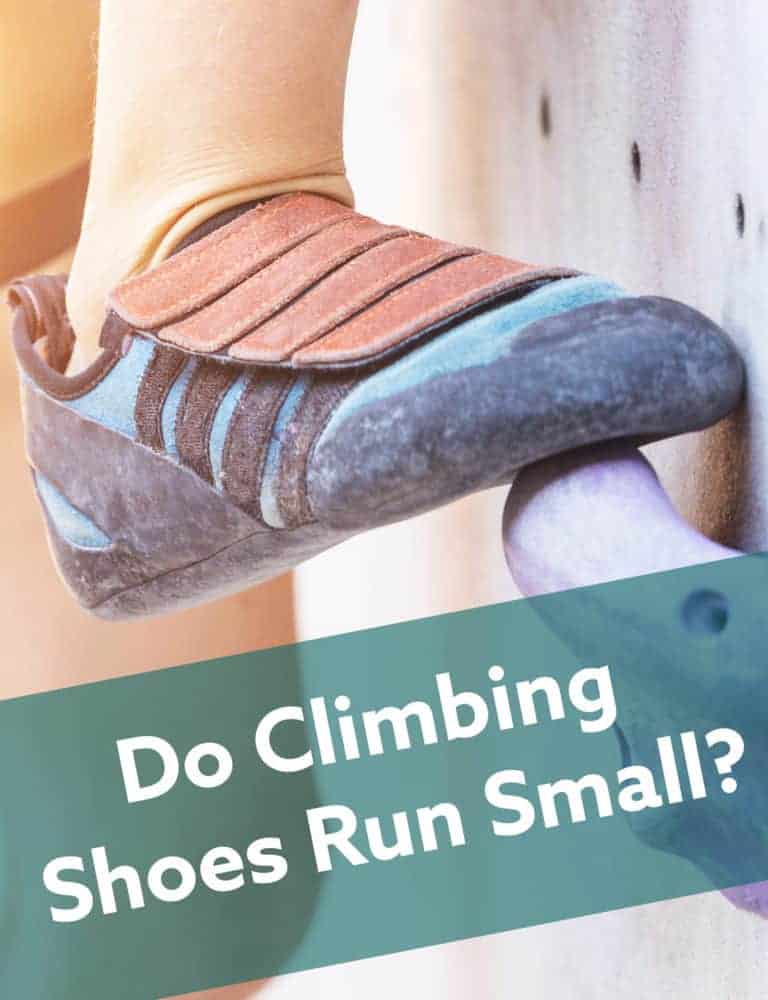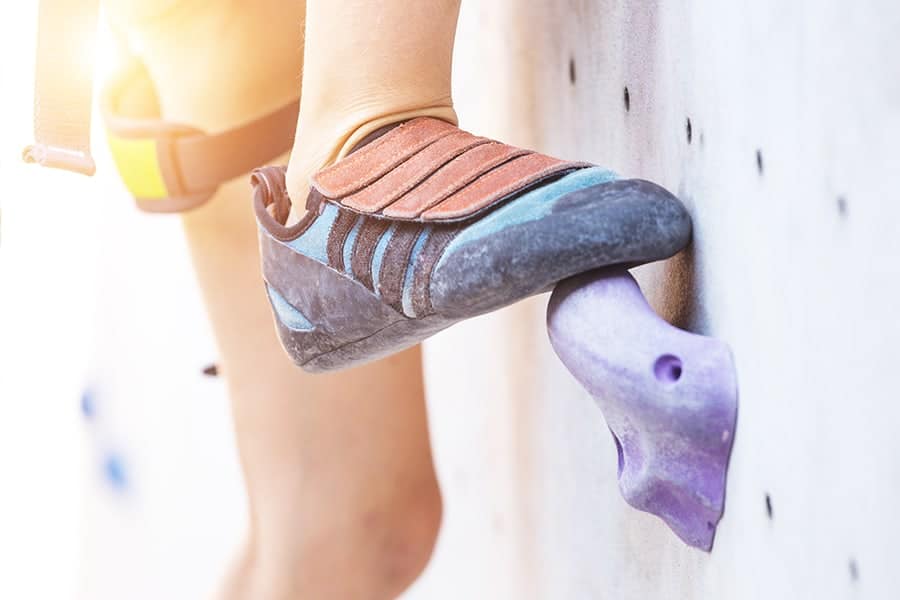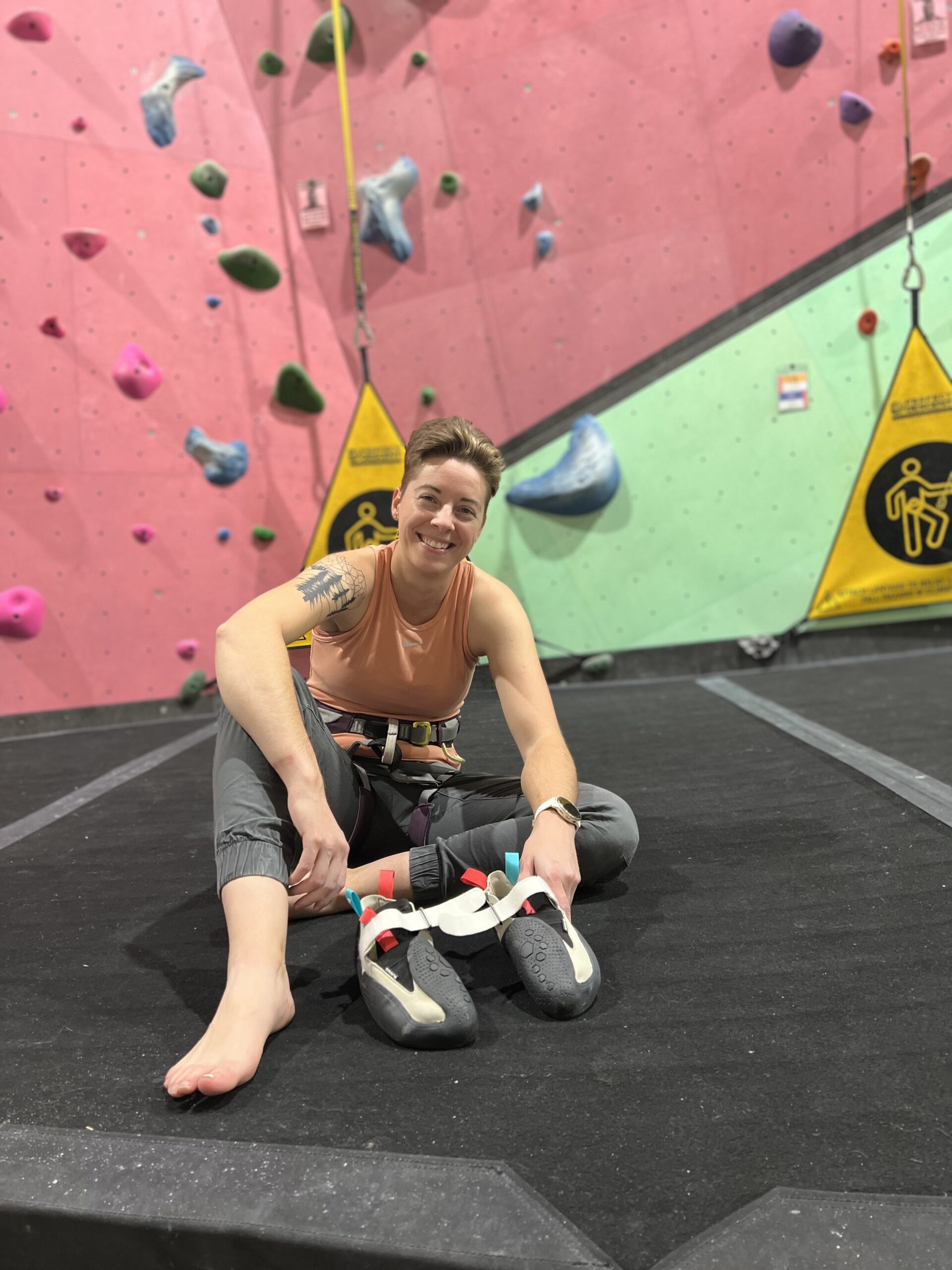If you are buying your first pair of climbing shoes, you may be wondering what affects how climbing shoes fit.
What affects how climbing shoes fit? Climbing shoe sizes change based on many factors including brands, material, shoe shapes. As for brands, La Sportiva is commonly smaller than Madrock climbing shoes. As for material, leather stretches whereas synthetic maintains their shape.
Below are additional considerations to review when you are trying to find the best fitting shoes.
Sizing Shoe Brands
Every shoe brand fits differently, just like in any other kind of shoe. Because of this, I recommend that you try shoes on at a climbing shop before you buy them.
- La Sportiva: Climbers commonly report buying climbing shoes that are a smaller size compared to other climbing shoes and street shoes.
- Madrock: Climbers often buy larger climbing shoes than with other brands and street shoes.
- Evolv shoes are reportedly similar to street shoe size.
- ClimbX shoes are commonly made with leather and thus stretch over time. However, many climbers report they are true to street shoe sizes.
- Scarpas are commonly smaller than street shoe sizes.
Sizing with Leather Vs. Synthetic
The two main types of material climbing shoes are made of is leather and synthetic material. Depending on whether the shoes are made of leather or synthetic, their fit may change over time.
When it comes to leather climbing shoes, they may stretch slightly. Because of this, most climbers get slightly smaller shoes so that they will fit perfectly after they stretch.
As for synthetic shoes, they usually maintain their shape so the fit you get when you wear them for the first time will likely be the fit you get when you wear them for the 100th time.
Sizing with Shape
Climbing shoes are unique compared to other sports shoes in that they have different shoe shapes. For example, beginners’ climbing shoes are mostly flat, but more advanced bouldering shoes have an aggressive downturn.
This downturn may change how your toes fit in the shoe.
It is important to consider the use of your toes when you are trying on your shoes so when you are checking the fit, make sure you will be able to leverage every piece of the shoe, especially your toes.
- Neutral: neutral shoes commonly the “biggest” version of climbing shoes in regards to shoe shapes.
- Moderate: moderate shaped shoes usually fit climbers toes tighter than neutral shoes but bigger than aggressive climbing shoes
- Aggressive: aggressive shoes fit climbers the tightest compared to other shoe shapes.
Common Sizing
Most climbing shoes are measured in UK shoe measurements, even in US climbing shops. With that being the case, it is ideal to know what your shoe size is in UK shoe measurements.
Below is a sizing conversion chart from MadRock
Related Questions
There are a lot of other things to consider than just how your climbing shoes fit. Below are other articles that may helpful for you.
How Tight Should Your Climbing Shoes Be?
Climbing shoes should be tight enough to prevent movement in the shoe. Generally, you should feel uncomfortable in your climbing shoes but you shouldn’t feel pain. Any movement in the shoe can prevent optimal use of your climbing shoes but if climbing shoes are too tight, they may cause damage to your feet.

More Buyer’s Guides:
- The Top 5 Crash Pads For Bouldering: How To Decide Which Is Best
- Diy Hangboard With Jugs And Edges For Less Than $15
- 6 Of The Best Belay Devices For Beginner Climbers
- The Best 11 Climbing Shoes Under $100
- Climbing Chalk: Chunky Vs. Fine
- The Best Chalk For Climbing And Bouldering
- Rock Climbing Starter Kits For Beginners Compared
- Liquid Chalk Vs. Dry Chalk For Bouldering (Hint: Dry Chalk Is Better)
- Top 5 Gear You Need In Your Climbing Pack For The Best Experience
- What To Wear While Bouldering
- Should You Upgrade To An Assisted-Braking Belay Device?
- Everything You Need To Know About Climbing Chalk
- 37 Things Serious Climbers Bring With Them To The Mountains
- Clothing For Climbing In The Gym – What Should You Wear?
- Can You Climb Without Chalk?
- How Tight Climbing Shoes Should Fit For The Best Performance
- Harnesses For Rappeling
- My Favorite Harness For Climbing
- What You Should Wear While Climbing
- What Affects How Climbing Shoes Fit?
- How To Clean Your Grigri
- How To Care For Your Climbing Rope
More About Climbing:
- My Favorite Harness For Climbing
- Belaying 101: You Shouldn’t Climb Without Reading This
- How To Belay With A Grigi For Top Rope Climbing | With Photos And Video
- How Climbing Routes Are Set: Interview With Team Usa Chief Route Setter Mike Bockino
- How To Put On A Harness
- What You Need To Know Before Starting Indoor Rock Climbing
- How To Belay: Using Assisted Locking Belay Devices
- How Should Your Climbing Harness Fit?
- How Are Climbing Routes Graded?
- What You Should Wear While Climbing
- What Affects How Climbing Shoes Fit?
- 7 Common Mistakes In Rock Climbing For Beginners
- Why Is Climbing Such A Mental Sport?


